
Find out what are the medications available to help you lead a Dependence Free Life
Methadone
WHAT IT IS?
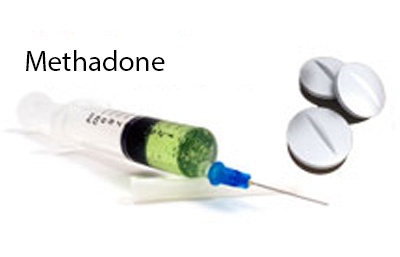
What is Methadone used for?
Methadone is used to help people get off opiates such as heroin and morphine. It acts as a replacement for these drugs. It should be used with social help, medical help and psychological help. It is also used in lower doses as a pain killer and as a cough suppressant.
How does Methadone work?
If you have been taking opiates then you will have been stimulating your opiate receptors. This in turn releases dopamine in your reward centers of your brain and gives you the good feeling. Methadone replaces the heroin and hits these receptors. The trouble with heroin is that the effect wears off quickly, you get withdrawal symptoms and craving, and have to have another dose. Methadone doesn't have the high or buzz you get from heroin but because it lasts in the body and brain for longer, you don't get the same quick withdrawal and craving. This will help someone get off heroin.
Methadone also blocks glutamate receptors, which may reduce the reward and craving from opiates.
Starting, Taking, Stopping

When should I take Methadone ?
That's up to you, but most people find daily in the morning suits them best.
How should I take Methadone ?
The tablets should be swallowed with at least half a glass of water whilst sitting or standing. This is to make sure that they reach the stomach and do not stick in your throat.
Liquids:
Shake the bottle well before use as the drug can settle to the bottom and cause you to receive a lower dose at the start and too high a dose at the end of the bottle.
Methadone should be taken once a day, usually at the same time every day.
How long will Methadone take to work ?
About 30-60 minutes, and the effect wears off in about 24hrs.
How long will Methadone need to be taken for?
You should carry on with methadone until you feel ready to come off it. Your doctor will help you with this. Whilst you are on methadone you should try to make the changes in your life that will allow you to feel ready to detox. Although methadone is not harmful, being on it means you are still physically addicted to opiates. Coming off it frees you from this addiction and can change you way you feel about yourself, and the way other people think about you, in a positive way.
Is Methadone addictive?
For a drug to be addictive or produce dependence, then it must have a number of characteristics:
- should produce craving for the drug when the last dose "wears off"
- there should be a "reward" (e.g. a good feeling) from taking the drug
- should produce tolerance ie you need more drug to get the same effect
- should produce withdrawal symptoms specific to that drug.
These characteristics come from the World Health Organization. Methadone can cause all these and so is addictive. However, it is easier get off than short-acting opiates such as heroin because the reward is less.
Can I stop taking Methadone suddenly?
If you do, you will get withdrawal symptoms. You should come off methadone slowly over a long time for the best results.
INTERACTIONS, FOOD & DRINK
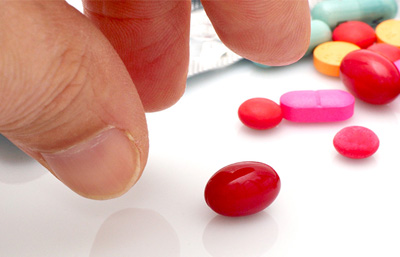
Are there any foods or drinks that I should avoid whilst I am taking Methadone ?
Other than alcohol, you should have no problems with any foods or drinks.
Can I drink alcohol while I am taking Methadone ?
Whether or not it is safe to drink alcohol with any medicine will depend on:
- How much you have to drink e.g. the amount and over how long
- What you then try to do (e.g. sleep or drive)
- If you have any other conditions e.g. epilepsy, asthma or a chest infection (as alcohol can make it harder to breathe)
- If you are taking any other medicines
Alcohol reaches all parts of the brain and can affect many things e.g. thinking, reactions and breathing. Alcohol can also boost the effect of GABA (the brain's main calming chemical messenger).
If you drink alcohol and methadone, it will make you more drowsy. Also, a lot of alcohol and methadone can make it much more difficult to breath. In fact drinking alcohol is a common cause of death among methadone users.
What about illicit drugs such as cannabis, cocaine, ecstasy and opiates with Methadone ?
By including this section, we're not saying it's right to take illicit or illegal drugs, because it isn't. We're just trying to answer the questions as best we can under the circumstances. With illicit drugs, the full answer is usually that we don't really know. So, we can only go on a few studies, a few reports and what we know about the drugs themselves.
Cannabis (illegal in most countries): Smoking cannabis increases the amount of dopamine in the pleasure centers of the brain, which is where the reward or buzz comes from. However, psychosis also comes from having too much dopamine in another area of the brain. You have to remember that cannabis can increase dopamine in all areas of the brain and so can make psychosis worse. Please be careful, everything in moderation and if dope makes you worse, keep off the grass. It really won't help you in the long-term. However, it seems that there are no extra problems if smoking cannabis with methadone. But that doesn't mean it's safe either.
Cocaine (illegal in most countries): Cocaine is of course highly addictive and has many adverse or side effects on the body and brain. It can make most mental health symptoms worse in the long-term. However, it seems that there are no extra problems with cocaine and methadone, although cocaine might make methadone less effective by increasing its breakdown by the liver. And again that doesn't mean it's safe either.
Ecstasy (illegal in most countries): Ecstasy has many effects on the brain, the main ones producing the high seem to be by boosting serotonin, noradrenaline and dopamine in the brain. While it can cause a high, the effect wears off fairly quickly. It seems that the toxic effects on the brain are cumulative i.e. the more tablets you have over your lifetime, the more chance you have of having damage to the brain e.g. long-term depression and poor memory. However, there are no reports of extra problems with methadone and ecstasy, but again this doesn't mean it's safe.
Opiates: The opiates include many chemicals, some of which are used in medical care (e.g. codeine for diarrhoea and stopping coughs, diamorphine and morphine for pain). If you take another opiate as well, you are using "on top" and this can have disastrous effects. You can get extra sedation, you can stop breathing and feel dizzy and fall over ("postural hypotension"). So, it's a bad idea to use on top.
WOMEN’S HEALTH
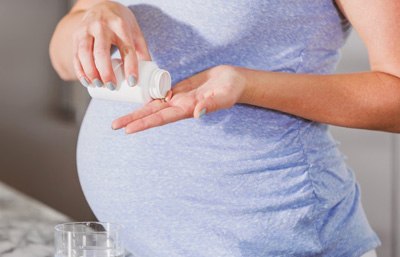
If I am on the contraceptive pill, how will Methadone be affected?
You should have no problem with methadone and the contraceptive pill ("The Pill"). As mentioned above, being underweight and with chaotic drug means your periods can stop. If you start methadone your fertility may return before your periods start again so make sure you are using adequate contraception.
Will emergency contraception (the "morning-after pill") work if I am taking Methadone ?
‘The morning after pill', is taken to reduce the chances of becoming pregnant after unprotected sex or failure of a contraceptive method. In fact "Emergency Contraception" is the better term because it can be taken up to 72 hours (3 days) afterwards. If you are taking methadone, the usual dose should work if you follow the instructions carefully. N.B. We accept that for religious, cultural or ethical reasons some people do not approve of, or agree with, the use of the "Morning After" pill. However, we have answered the question as it is a commonly asked.
Will Methadone affect my periods (menstrual cycle)?
Several female functions such as menstrual cycle (e.g. your periods) are controlled by a hormone called prolactin. Prolactin in the body rises during and after pregnancy and this triggers the body to make breast milk. The amount of prolactin in the body is kept in control by one part of the brain uses dopamine as its chemical messenger. Some medicines (especially antipsychotics) block the effect of dopamine in the brain.
Luckily methadone doesn't seem to have any effect on dopamine in this part of the brain and so should not have any effect on your periods. If your periods are irregular or late, or you start leaking milk, then you should see your doctor about this to find the cause. As mentioned above, being underweight and with chaotic drug means your periods can stop. If you start methadone your fertility may return before your periods start again so make sure you are using adequate contraception.
Can I breast feed if I am taking Methadone ?
Almost every medicine passes into breast-milk. The main questions are how much and if this is likely to have an effect on your baby. But also remember that being ill (e.g. depressed, manic, psychotic) may have more harmful and lasting effects on you and your child (such as bonding and behavior) than a small amount of an effective medicine. If you have been taking a medicine while you are pregnant, you should usually be able to carry on as the amount in breast-milk is much less than the baby would have got while you were pregnant. It is usually thought to be fairly safe if the baby gets less than 10% of the mum's dose. But there may be times when although a medicine gets into breast milk the benefit may be worth the risk, so you should seek a doctor’s advice on this. If you stop any medicine suddenly, some people can get discontinuation or withdrawal symptoms. If you have been taking a medicine during pregnancy, the same can sometimes happen to the baby when born. If the drug gets into breast milk, this can reduce the effect of suddenly not having the medicine (as well as coping with being in the big wide world too).
If you want to breast-feed there are some things you can do to reduce any risk:
Nearly all medicines can be taken once a day. So, taking your daily dose just before the baby's longest sleep (often this will be at night) will reduce the amount the baby gets from the milk. Any side effects in the baby will be higher if the mum is taking a higher dose. So, try to take the lowest dose possible to still get an effect.
- Try not to take any medicines you don't really need. This includes any medicines you might buy over-the-counter
- Make sure your nurse, or doctor checks your baby for any side effects e.g. being extra sleepy, having colic, feeding problems, being floppy or poor weight gain. If there are any problems you might need to switch medicines or drop your dose a bit.
- Hind milk (the second half of the feed) is likely to contain slightly more of any medicine than the first half
- Avoid new medicines if possible as there is less information about them and breast-feeding.
- You must be extra careful of any medicines if your baby was pre-mature, or has kidney, liver, heart or brain problems.
We know that some methadone gets into breast milk, but probably only enough to give the baby small amounts via the milk. Surprisingly, the amounts in milk do not seem to be related to the mum's dose. But you should discuss this with your doctor, nurse or health visitor because being back on street drugs might be more harmful to your baby than a small amount of methadone. They will be able to make regular checks on your baby to make sure there are no problems e.g. poor feeding or colic. The other thing is that if you were taking methadone while you were pregnant, the baby may have withdrawal symptoms when they are born (this is called "Neonatal Abstinence Syndrome"). Breast feeding while taking methadone can help make this less of a problem.
OTHER FAQs
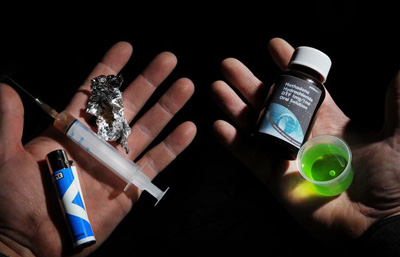
Can I drive while I am taking Methadone ?
Driving is not advised when taking Methadone.
Methadone can cause drowsiness and initially can reduce your reaction times, especially if you take alcohol or other sedatives at the same time. This could cause you to have an accident putting yourself and others at risk.
Buprenorphine
WHAT IT IS?
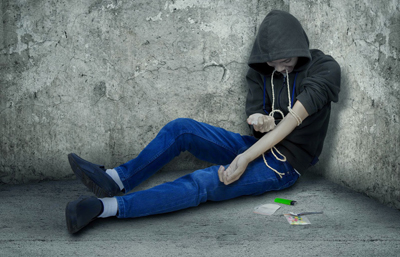
What is Buprenorphine used for?
Buprenorphine is used to help people get off opiates such as heroin, morphine and buprenorphine. It should be used with social help, medical help and psychological help.
It is also used in lower doses as a pain killer.
How does Buprenorphine work?
When you take an opiate, it stimulates opiate receptors in your brain. This in turn releases dopamine in the reward centers of your brain and this gives you the good feeling. Buprenorphine is a "partial agonist" at opiate receptors in the brain. This means that it hits these receptors and partly blocks them, but also partially stimulates them. What this means in practice is that buprenorphine blocks the effect of any opiates you might take but because it stimulates the receptors a bit it stops you getting withdrawal effects. It also puts a "ceiling" on how much effect you can get from anything you take.
STARTING, STOPPING, TAKING?
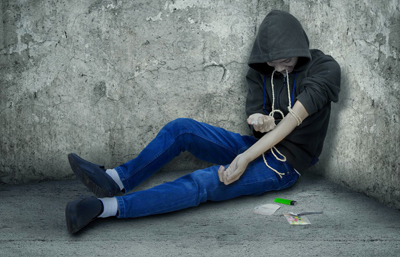
When should I take Buprenorphine ?
You should take your buprenorphine every day. The time of day doesn't really matter, but most people find the morning better.
What you mustn't do is start buprenorphine if you've been taking opiates recently (6 hours for heroin or 24 hours for methadone). This is because buprenorphine will push the opiates off the receptors and push you into withdrawal.
How should I take buprenorphine ?
Don't swallow it!
Buprenorphine is absorbed very quickly from the stomach but unfortunately the liver metabolizes or breaks it down almost completely the first time it passes through the liver. So, the tablets have to be placed under the tongue so the buprenorphine can be absorbed and go straight to the brain before it gets to the liver.
Place the tablet under your tongue (sublingually) and allow it to dissolve slowly. This takes about 5-10 minutes.
Please don’t try injecting Buprenorphine sublingual tablets. When you crush up the tablets, there are always a few little bits left. If you inject these, they get stuck in veins and arteries. These block them up, and then that area of your body dies. When it dies, you can get infections and even gangrene. If you value your legs and arms, do not inject these tablets.
How long will buprenorphine take to work?
Buprenorphine sublingual tablets starts to work in a few minutes, and peak after about 90 minutes. The effect lasts for about 2 days.
How long will buprenorphine need to be taken for?
You should carry on with buprenorphine until you feel ready to come off it. Your doctor will help you with this. Whilst you are on buprenorphine you should try to make the changes in your life that will allow you to feel ready to detox. Although buprenorphine is not harmful, being on it means you are still physically addicted to opiates. Coming off it frees you from this addiction and can change you way you feel about yourself, and the way other people think about you, in a positive way.
Is buprenorphine addictive?
For a drug to be addictive or produce dependence, then it must have a number of characteristics:
- Should produce craving for the drug when the last dose "wears off"
- There should be a "reward" (e.g. a good feeling) from taking the drug
- Should produce tolerance i.e you need more drug to get the same effect
- Should produce withdrawal symptoms specific to that drug.
These characteristics come from the World Health Organisation. Buprenorphine is addictive as it can cause withdrawal effects. However, these are probably less than with other opiate drugs.
Can I stop taking buprenorphine suddenly?
You should not stop buprenorphine suddenly, because you can get withdrawal symptoms, similar to heroin withdrawal.
INTERACTIONS, FOOD & DRINK
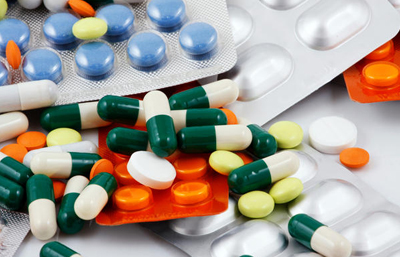
Are there any foods or drinks that I should avoid whilst I am taking buprenorphine ?
No, other than alcohol.
Can I drink alcohol while I am taking buprenorphine ?
Whether or not it is safe to drink alcohol with any medicine will depend on:
- How much you have to drink e.g. the amount and over how long
- What you then try to do (e.g. sleep or drive)
- If you have any other conditions e.g. epilepsy, asthma or a chest infection (as alcohol can make it harder to breathe)
- If you are taking any other medicines
Alcohol reaches all parts of the brain and can affect many things e.g. thinking, reactions and breathing. Alcohol can also boost the effect of GABA (the brain's main calming chemical messenger).
If you drink alcohol and buprenorphine, it will make you more drowsy. Also, a lot of alcohol and buprenorphine can make it much more difficult to breath. In fact drinking alcohol is a common cause of death among buprenorphine users.
What about illicit drugs such as cannabis, cocaine, ecstasy and opiates with buprenorphine ?
By including this section, we're not saying it's right to take illicit or illegal drugs, because it isn't. We're just trying to answer the questions as best we can under the circumstances. With illicit drugs, the full answer is usually that we don't really know. So, we can only go on a few studies, a few reports and what we know about the drugs themselves.
Cannabis (illegal in most countries): Smoking cannabis increases the amount of dopamine in the pleasure centers of the brain, which is where the reward or buzz comes from. However, psychosis also comes from having too much dopamine in another area of the brain. You have to remember that cannabis can increase dopamine in all areas of the brain and so can make psychosis worse. Please be careful, everything in moderation and if dope makes you worse, keep off the grass. It really won't help you in the long-term. However, it seems that there are no extra problems if smoking cannabis with buprenorphine.
Cocaine (illegal in most countries): Cocaine is of course highly addictive and has many adverse or side effects on the body and brain. It can make most mental health symptoms worse in the long-term. However, there are no reports of extra problems with buprenorphine and cocaine, although this doesn't mean it's safe.
Ecstasy (illegal in most countries): Ecstasy has many effects on the brain, the main ones producing the high seem to be by boosting serotonin, noradrenaline and dopamine in the brain. While it can cause a high, the effect wears off fairly quickly. It seems that the toxic effects on the brain are cumulative i.e. the more tablets you have over your lifetime, the more chance you have of having damage to the brain e.g. long-term depression and poor memory. However, there are no reports of extra problems with buprenorphine and ecstasy, but again this doesn't mean it's safe.
Opiates: The opiates include many chemicals, some of which are used in medical care (e.g. codeine for diarrhoea and stopping coughs; diamorphine and morphine for pain). Buprenorphine and an opiate will make you sleepier, can stop you breathing and give you "postural hypotension" (where you stand up and feel very dizzy). You should not take other opiates with buprenorphine.
WOMEN’S HEALTH

If I am on the contraceptive pill, how will buprenorphine be affected?
You should have no problem with “The Pill” and buprenorphine. As mentioned above, being underweight and with chaotic drug means your periods can stop. If you start buprenorphine your fertility may return before your periods start again so make sure you are using adequate contraception.
Will emergency contraception (the "morning-after pill") work if I am taking buprenorphine ?
The ‘morning after pill', is taken to reduce the chances of becoming pregnant after unprotected sex or failure of a contraceptive method. In fact "Emergency Contraception" is the better term because it can be taken up to 72 hours (3 days) afterwards. It can be bought over-the-counter without a prescription from pharmacies. If you are taking buprenorphine, the usual dose should work if you follow the instructions carefully. N.B. We accept that for religious, cultural or ethical reasons some people do not approve of, or agree with, the use of the "Morning After" pill. However, we have answered the question as it is a commonly asked.
Will buprenorphine affect my periods (menstrual cycle)?
Several female functions such as menstrual cycle (e.g. your periods) are controlled by a hormone called prolactin. Prolactin in the body rises during and after pregnancy and this triggers the body to make breast milk. The amount of prolactin in the body is kept in control by one part of the brain uses dopamine as its chemical messenger. Some medicines (especially antipsychotics) block the effect of dopamine in the brain.
Luckily buprenorphine doesn't seem to have any effect on dopamine in this part of the brain and so should not have any effect on your periods. If your periods are irregular or late, or you start leaking milk, then you should see your doctor about this to find the cause. As mentioned above, being underweight and with chaotic drug means your periods can stop. If you start buprenorphine your fertility may return before your periods start again so make sure you are using adequate contraception.
Can I breast feed if I am taking buprenorphine ?
Almost every medicine passes into breast-milk. The main questions are how much and if this is likely to have an effect on your baby. But also remember that being ill (e.g. depressed, manic, psychotic) may have more harmful and lasting effects on you and your child (such as bonding and behavior) than a small amount of an effective medicine. If you have been taking a medicine while you are pregnant, you should usually be able to carry on as the amount in breast-milk is much less than the baby would have got while you were pregnant. It is usually thought to be fairly safe if the baby gets less than 10% of the mum's dose. But there may be times when although a medicine gets into breast milk the benefit may be worth the risk, so you should seek personal advice on this. If you stop any medicine suddenly, some people can get discontinuation or withdrawal symptoms (see question above). If you have been taking a medicine during pregnancy, the same can sometimes happen to the baby when born. If the drug gets into breast milk, this can reduce the effect of suddenly not having the medicine (as well as coping with being in the big wide world too).
If you want to breast-feed there are some things you can do to reduce any risk:
- Nearly all medicines can be taken once a day. So, taking your daily dose just before the baby's longest sleep (often this will be at night) will reduce the amount the baby gets from the milk.
- Any side effects in the baby will be higher if the mum is taking a higher dose. So, try to take the lowest dose possible to still get an effect.
- Try not to take any medicines you don't really need. This includes any medicines you might buy over-the-counter
- Make sure your nurse or doctor checks your baby for any side effects e.g. being extra sleepy, having colic, feeding problems, being floppy or poor weight gain. If there are any problems you might need to switch medicines or drop your dose a bit
- Hind milk (the second half of the feed) is likely to contain slightly more of any medicine than the first half
- Avoid new medicines if possible as there is less information about them and breast-feeding.
You must be extra careful of any medicines if your baby was pre-mature, or has kidney, liver, heart or brain problems. Although buprenorphine passes in to breast milk it is not active if swallowed so it is unlikely to affect your baby much at all. The down side of this is that (unlike methadone) it will not help much if your baby is experiencing withdrawal symptoms. Most street drugs and alcohol also pass in to breast milk so continue to avoid these while breast feeding.
OTHER FAQs
Can I drive while I am taking buprenorphine ?
You must not drive while taking Buprenorphine.
Buprenorphine can cause drowsiness and initially can reduce your reaction times, especially if you take alcohol or other sedatives at the same time. This could cause you to have an accident putting yourself and others at risk.
Buprenorphine + Naloxone
WHAT IT IS?
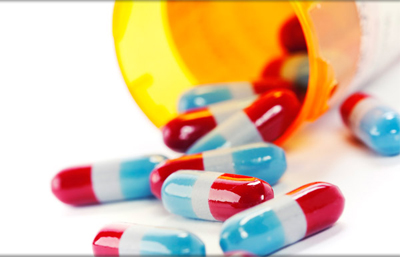
What is Buprenorphine + Naloxone used for?
Buprenorphine + Naloxone is used to help people get off opiates such as heroin, morphine and Buprenorphine + Naloxone. It contains a combination of buprenorphine and naloxone. It should be used with social help, medical help and psychological help.
Buprenorphine is an opioid medication. An opioid is sometimes called a narcotic. Naloxone is a special narcotic drug that reverses the effects of other narcotic medicines. It is also used in lower doses as a pain killer.
How does Buprenorphine + Naloxone work?
When you take an opiate, it stimulates opiate receptors in your brain. This in turn releases dopamine in the reward centers of your brain and this gives you the good feeling. Buprenorphine is a "partial agonist" at opiate receptors in the brain. This means that it hits these receptors and partly blocks them, but also partially stimulates them. What this means in practice is that Buprenorphine blocks the effect of any opiates you might take but because it stimulates the receptors a bit it stops you getting withdrawal effects. It also puts a "ceiling" on how much effect you can get from anything you take.
Naloxone is added to deter injection. Naloxone (the short-acting parenteral medication used to treat opioid overdose) is not absorbed sublingually, but it will block opioid receptors when injected, causing withdrawal in patients who are physically dependent on opioids.
STARTING, STOPPING, TAKING?
When should I take Buprenorphine + Naloxone ?
You should take your Buprenorphine + Naloxone every day. The time of day doesn't really matter, but most people find the morning better.
What you mustn't do is start Buprenorphine + Naloxone if you've been taking opiates recently (6 hours for heroin or 24 hours for methadone). This is because Buprenorphine + Naloxone will push the opiates off the receptors and push you into withdrawal.
How should I take Buprenorphine + Naloxone ?
Don't swallow it!
Buprenorphine + Naloxone is absorbed very quickly from the stomach but unfortunately the liver metabolizes or breaks it down almost completely the first time it passes through the liver. So, the tablets have to be placed under the tongue so the Buprenorphine + Naloxone can be absorbed and go straight to the brain before it gets to the liver.
Place the tablet under your tongue (sublingually) and allow it to dissolve slowly. This takes about 5-10 minutes.
The sublingual tablet also contains naloxone. Naloxone is an opiate antagonist usually used to help people who can't breath properly after an overdose of opiates. It also blocks the effect of Buprenorphine + Naloxone but the naloxone is not absorbed if you take it under the tongue so has no effect when taken properly. However, anyone injecting naloxone will find that the naloxone works when injected, so causes instant opiate withdrawal. It is sometimes used to stop people injecting the tablets.
How long will Buprenorphine + Naloxone take to work?
Buprenorphine + Naloxone sublingual tablets starts to work in a few minutes, and peak after about 90 minutes. The effect lasts for about 2 days.
How long will Buprenorphine + Naloxone need to be taken for?
You should carry on with Buprenorphine + Naloxone until you feel ready to come off it. Your key worker and doctor will help you with this. Whilst you are on Buprenorphine + Naloxone you should try to make the changes in your life that will allow you to feel ready to detox. Although Buprenorphine + Naloxone is not harmful, being on it means you are still physically addicted to opiates. Coming off it frees you from this addiction and can change you way you feel about yourself, and the way other people think about you, in a positive way.
Is Buprenorphine + Naloxone addictive?
For a drug to be addictive or produce dependence, then it must have a number of characteristics:
- Should produce craving for the drug when the last dose "wears off"
- There should be a "reward" (e.g. a good feeling) from taking the drug
- Should produce tolerance i.e you need more drug to get the same effect
- Should produce withdrawal symptoms specific to that drug.
These characteristics come from the World Health Organisation. Buprenorphine + Naloxone is addictive as it can cause withdrawal effects. However, these are probably less than with other opiate drugs.
Can I stop taking Buprenorphine + Naloxone suddenly?
You should not stop Buprenorphine + Naloxone suddenly, because you can get withdrawal symptoms, similar to heroin withdrawal..
INTERACTIONS, FOOD & DRINK
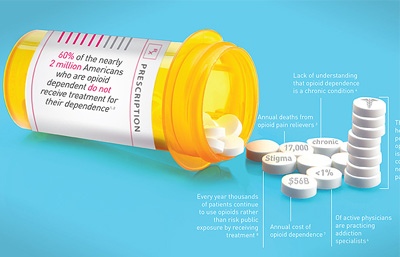
Are there any foods or drinks that I should avoid whilst I am taking Buprenorphine + Naloxone ?
No, other than alcohol.
Can I drink alcohol while I am taking Buprenorphine + Naloxone ?
Whether or not it is safe to drink alcohol with any medicine will depend on:
- How much you have to drink e.g. the amount and over how long
- What you then try to do (e.g. sleep or drive)
- If you have any other conditions e.g. epilepsy, asthma or a chest infection (as alcohol can make it harder to breathe)
- If you are taking any other medicines
Alcohol reaches all parts of the brain and can affect many things e.g. thinking, reactions and breathing. Alcohol can also boost the effect of GABA (the brain's main calming chemical messenger).
If you drink alcohol and Buprenorphine + Naloxone, it will make you more drowsy. Also, a lot of alcohol and Buprenorphine + Naloxone can make it much more difficult to breath. In fact drinking alcohol is a common cause of death among Buprenorphine + Naloxone users.
What about illicit drugs such as cannabis, cocaine, ecstasy and opiates with Buprenorphine + Naloxone ?
By including this section, we're not saying it's right to take illicit or illegal drugs, because it isn't. We're just trying to answer the questions as best we can under the circumstances. With illicit drugs, the full answer is usually that we don't really know. So, we can only go on a few studies, a few reports and what we know about the drugs themselves.
Cannabis (illegal in most countries): Smoking cannabis increases the amount of dopamine in the pleasure centres of the brain, which is where the reward or buzz comes from. However, psychosis also comes from having too much dopamine in another area of the brain. You have to remember that cannabis can increase dopamine in all areas of the brain and so can make psychosis worse. Please be careful, everything in moderation and if dope makes you worse, keep off the grass. It really won't help you in the long-term. However, it seems that there are no extra problems if smoking cannabis with Buprenorphine + Naloxone.
Cocaine (illegal in most countries): Cocaine is of course highly addictive and has many adverse or side effects on the body and brain. It can make most mental health symptoms worse in the long-term. However, there are no reports of extra problems with Buprenorphine + Naloxone and cocaine, although this doesn't mean it's safe.
Ecstasy (illegal in most countries): Ecstasy has many effects on the brain, the main ones producing the high seem to be by boosting serotonin, noradrenaline and dopamine in the brain. While it can cause a high, the effect wears off fairly quickly. It seems that the toxic effects on the brain are cumulative i.e. the more tablets you have over your lifetime, the more chance you have of having damage to the brain e.g. long-term depression and poor memory. However, there are no reports of extra problems with Buprenorphine + Naloxone and ecstasy, but again this doesn't mean it's safe.
Opiates: The opiates include many chemicals, some of which are used in medical care (e.g. codeine for diarrhoea and stopping coughs; diamorphine and morphine for pain). Buprenorphine + Naloxone and an opiate will make you sleepier, can stop you breathing and give you "postural hypotension" (where you stand up and feel very dizzy). You should not take other opiates with Buprenorphine + Naloxone.
WOMEN’S HEALTH
I am on the contraceptive pill, how will Buprenorphine + Naloxone be affected?
You should have no problem with the Pill and Buprenorphine + Naloxone.
As mentioned above, being underweight and with chaotic drug means your periods can stop. If you start Buprenorphine + Naloxone your fertility may return before your periods start again so make sure you are using adequate contraception.
Will emergency contraception (the "morning-after pill") work if I am taking Buprenorphine + Naloxone ?
The ‘morning after pill', is taken to reduce the chances of becoming pregnant after unprotected sex or failure of a contraceptive method. In fact "Emergency Contraception" is the better term because it can be taken up to 72 hours (3 days) afterwards. It can be bought over-the-counter without a prescription from pharmacies. If you are taking Buprenorphine + Naloxone, the usual dose should work if you follow the instructions carefully.
p
N.B. We accept that for religious, cultural or ethical reasons some people do not approve of, or agree with, the use of the "Morning After" pill. However, we have answered the question as it is a commonly asked.
Will Buprenorphine + Naloxone affect my periods (menstrual cycle)?
Several female functions such as menstrual cycle (e.g. your periods) are controlled by a hormone called prolactin. Prolactin in the body rises during and after pregnancy and this triggers the body to make breast milk. The amount of prolactin in the body is kept in control by one part of the brain uses dopamine as its chemical messenger. Some medicines (especially antipsychotics) block the effect of dopamine in the brain.
Luckily Buprenorphine + Naloxone doesn't seem to have any effect on dopamine in this part of the brain and so should not have any effect on your periods. If your periods are irregular or late, or you start leaking milk, then you should see your doctor about this to find the cause.
As mentioned above, being underweight and with chaotic drug means your periods can stop. If you start Buprenorphine + Naloxone your fertility may return before your periods start again so make sure you are using adequate contraception.
Can I breast feed if I am taking Buprenorphine + Naloxone ?
Almost every medicine passes into breast-milk. The main questions are how much and if this is likely to have an effect on your baby. But also remember that being ill (e.g. depressed, manic, psychotic) may have more harmful and lasting effects on you and your child (such as bonding and behavior) than a small amount of an effective medicine. If you have been taking a medicine while you are pregnant, you should usually be able to carry on as the amount in breast-milk is much less than the baby would have got while you were pregnant. It is usually thought to be fairly safe if the baby gets less than 10% of the mum's dose. But there may be times when although a medicine gets into breast milk the benefit may be worth the risk, so you should seek personal advice on this.
If you stop any medicine suddenly, some people can get discontinuation or withdrawal symptoms (see question above). If you have been taking a medicine during pregnancy, the same can sometimes happen to the baby when born. If the drug gets into breast milk, this can reduce the effect of suddenly not having the medicine (as well as coping with being in the big wide world too).
If you want to breast-feed there are some things you can do to reduce any risk:
- Nearly all medicines can be taken once a day. So, taking your daily dose just before the baby's longest sleep (often this will be at night) will reduce the amount the baby gets from the milk.
- Any side effects in the baby will be higher if the mum is taking a higher dose. So, try to take the lowest dose possible to still get an effect.
- Try not to take any medicines you don't really need. This includes any medicines you might buy over-the-counter Make sure your nurse or doctor checks your baby for any side effects e.g. being extra sleepy, having colic, feeding problems, being floppy or poor weight gain. If there are any problems you might need to switch medicines or drop your dose a bit
- Hind milk (the second half of the feed) is likely to contain slightly more of any medicine than the first half
- Avoid new medicines if possible as there is less information about them and breast-feeding.
You must be extra careful of any medicines if your baby was pre-mature, or has kidney, liver, heart or brain problems.
Although Buprenorphine + Naloxone passes in to breast milk it is not active if swallowed so it is unlikely to affect your baby much at all. The down side of this is that (unlike methadone) it will not help much if your baby is experiencing withdrawal symptoms. Most street drugs and alcohol also pass in to breast milk so continue to avoid these while breast feeding.
OTHER FAQs
Can I drive while I am taking Buprenorphine + Naloxone ?
You must not drive while taking Buprenorphine + Naloxone.
Buprenorphine + Naloxone can cause drowsiness and initially can reduce your reaction times, especially if you take alcohol or other sedatives at the same time. This could cause you to have an accident putting yourself and others at risk.
Naltrexone Implant
About the Naltrexone Implant
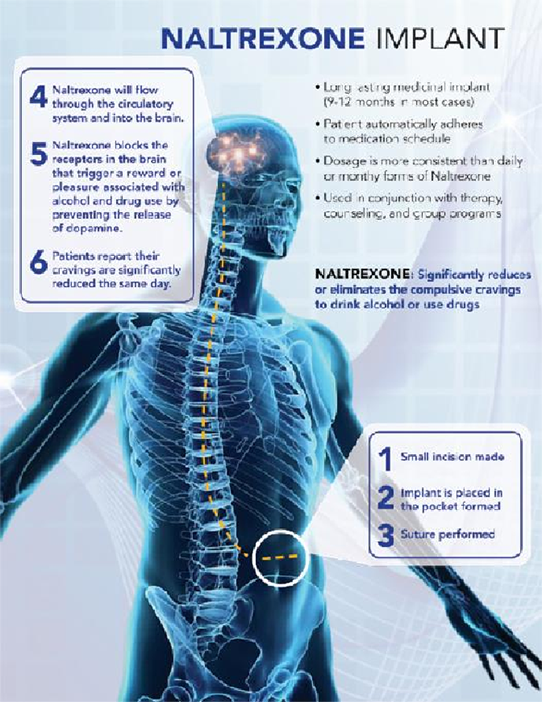
The Naltrexone Implants comprises of the Indian FDA-approved Naltrexone active ingredient, which blocks the receptors and removes the euphoria, reinforcing effects, and physical cravings associated with alcohol consumption and drug abuse. More importantly, within hours of receiving the Naltrexone implant, many patients report feeling complete freedom from cravings. Most individuals are able to return to work the following day. Only the people with whom you wish to share know that you are enrolled in a rehab program.
Mechanism of Action
Naltrexone reverses the effects of opioids and is used primarily in the management of alcohol and drug addiction. Naltrexone and its active metabolite 6β-naltrexol block the opioid receptors so that other drugs cannot bind to these receptors and modulate their function in the body. Naltrexone is also hypothesized to affect the dopaminergic pathway, (one of the primary centers for risk-reward analysis in the brain, and a tertiary "pleasure center") which is hypothesized to be a major center of the reward associated with addiction that all major drugs of abuse are believed to activate.
Advantages of the Implant
The advantages of Naltrexone Implant are:
- Higher efficacy: Clinical studies have shown that the Naltrexone implant was better associated with reducing drug and alcohol craving and relapse than naltrexone oral tablets.
- Long duration of action: The controlled release technology maintains a steady therapeutic level of Naltrexone in the body for a period of three months.
- Higher Patient Compliance: Unlike the daily administration of oral Naltrexone tablets, the implants continuously block the craving to drugs and alcohol for a long duration.
The Implant Procedure
This quick outpatient procedure immediately begins to reduce the cravings for alcohol and drugs. The Naltrexone implant slowly releases the medicine into the body for up to 3 months or longer, in most patients, depending on individual characteristics and metabolism. Once the physical cravings for the abused substance is suppressed, patients are able to focus on their mental, emotional, and spiritual healing in order to successfully achieve a safe and sober lifestyle. This minimally-invasive outpatient procedure is performed by a trained surgeon in his surgical suite, requiring only local anesthetic, and takes 15 to 20 minutes. Specifically formulated and biodegradable, the implant is inserted just beneath the skin in the lower abdominal area.
How it Works?
Step 1: Call our helpline & book a session.
Step 2: First Assessment with doctor.
Step 3: Implant insertion (15 min procedure).
Step 4: Follow ups & patient monitoring.
Treatment Procedure & Cost
After the first (In-Clinic or home-based) assessment by the Navicare doctor, the implant date is decided with the patient. The Naltrexone Implants are imported from Europe and usually take 30-45 days to get the necessary permissions to import. The cost of the treatment with Naltrexone implant is Rs. 85,000 per implant. To know more details contact our help line 1800-419-0702.
Naltrexone Tablet
WHAT IT IS?
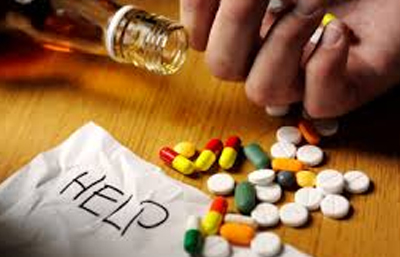
What is Naltrexone used for?
Naltrexone is used to help people get off opiates such as heroin and morphine. It blocks the effects of these drugs. It should be used with social help, medical help and psychological help. Naltrexone is sometimes also used for rapid detox in opioid dependence. It blocks the effects of any opiates the person takes, and can be used for long-term treatment.
Naltrexone can also be used to help people to stay off alcohol i.e. for alcohol dependence. It seems to block the craving for the next drink, and the reward from it, so stops a one off lapse turning in to a full relapse.
How does Naltrexone work?
Naltrexone helps reduce alcohol intake in people with an alcohol problem by blocking the craving and "reward" from a drink, so reducing the desire to drink.
If you have been taking opiates then you will have been stimulating your opiate receptors. This in turn releases dopamine in your reward centers of your brain and gives you the good feeling. Naltrexone blocks these receptors and stops any buzz or effect from taking heroin. This will also help to reduce craving.
STARTING, STOPPING, TAKING?
When should I take Naltrexone ?
For opiate dependence, the usual starting dose is 25mg (half a tablet) for the first day, then going up to 50mg a day. Because each dose lasts for a while, it can sometimes be taken three times a week (e.g. 100mg on Monday, 100mg on Wednesday and 150mg on Friday).
If you are taking naltrexone for opiate dependence it must not be started until all the opiate is out of your body, otherwise it will cause you to get bad withdrawal symptoms. After a detox this usually takes about 7-10 days. To check that you are OK to start naltrexone a urine screen should be taken and should be negative for opiates. To make absolutely sure you may be given a small injection of a short-acting opiate blocker called naloxone (so that if you run into trouble it will be short-lived). This is called a "Naloxone Challenge". If you don't get withdrawal symptoms after this, naltrexone can be started by mouth at 25mg the same day and then 50mg the next day.
It should not be started if you have used opiates in the last 7-10 days. Thus, you may be given a "Naloxone Challenge", with an injection of naloxone to make sure you don't get sudden withdrawal symptoms.
For alcohol dependence the starting dose is usually 50mg a day.
How should I take Naltrexone ?
The tablets should be swallowed with at least half a glass of water whilst sitting or standing. This is to make sure that they reach the stomach and do not stick in your throat.
How long will Naltrexone take to work?
It starts to work in about an hour, the peak is after about an hour and the effect can last for 2-3 days if used for opiate dependence. If you are taking it for alcohol dependence, it may take several weeks or months to have its full effect.
How long will Naltrexone need to be taken for?
Naltrexone is part of the treatment and so there is no set answer to this. You should probably take it for at least 3 months to start with, possibly even longer. Some people take it for over a year for alcohol dependence.
Is Naltrexone addictive?
For a drug to be addictive or produce dependence, then it must have a number of characteristics:
- Should produce craving for the drug when the last dose "wears off"
- There should be a "reward" (e.g. a good feeling) from taking the drug
- Should produce tolerance ie you need more drug to get the same effect
- Should produce withdrawal symptoms specific to that drug.
These characteristics come from the World Health Organisation. Naltrexone does not stimulate opiate receptors and so there is no tolerance, reward, withdrawal or craving, and so is not addictive.
Can I stop taking Naltrexone suddenly?
There is no great problem if you stop Naltrexone suddenly. There are no withdrawal symptoms. BUT, you must be very aware that if you then start to use opiates again, you may be MUCH MORE sensitive than you were before. If you then take a higher dose (which you might have been able to take OK before) it could kill you by stopping you breathing. This doesn't apply to alcohol dependence.
INTERACTIONS, FOOD & DRINK
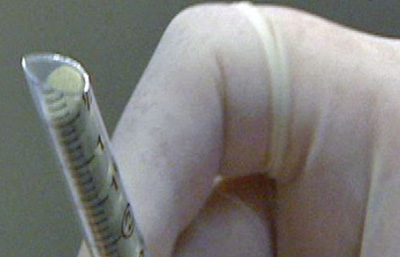
Are there any foods or drinks that I should avoid whilst I am taking Naltrexone ?
You should have no problems with any food or drinks, other than alcohol.
Can I drink alcohol while I am taking Naltrexone ?
Whether or not it is safe to drink alcohol with any medicine will depend on:
- How much you have to drink e.g. the amount and over how long
- What you then try to do (e.g. sleep or drive)
- If you have any other conditions e.g. epilepsy, asthma or a chest infection (as alcohol can make it harder to breathe)
- If you are taking any other medicines
Alcohol reaches all parts of the brain and can affect may things e.g. thinking, reactions and breathing. Alcohol can also boost the effect of GABA (the brain's main calming chemical messenger).
Naltrexone does not ‘block' alcohol and it will not make you ill if you drink with it.
If you drink alcohol while taking naltrexone you may notice that the pleasurable effects are less. This may help you to decide not to have another drink. Naltrexone does not stop you getting intoxicated (drunk) and you are still not safe to drive if you drink.
If you are taking naltrexone to help stay off alcohol then obviously you must try to avoid drinking.
If you are taking naltrexone to help stay off opiates you should be careful to avoid drinking to replace the opiates.
What about illicit drugs such as cannabis, cocaine, ecstasy and opiates with Naltrexone ?
By including this section, we're not saying it's right to take illicit or illegal drugs, because it isn't. We're just trying to answer the questions as best we can under the circumstances. With illicit drugs, the full answer is usually that we don't really know. So, we can only go on a few studies, a few reports and what we know about the drugs themselves.
Cannabis (illegal in most countries): Smoking cannabis increases the amount of dopamine in the pleasure centers of the brain, which is where the reward or buzz comes from. However, psychosis also comes from having too much dopamine in another area of the brain. You have to remember that cannabis can increase dopamine in all areas of the brain and so can make psychosis worse. Please be careful, everything in moderation and if dope makes you worse, keep off the grass. It really won't help you in the long-term. However, it seems that there are no extra problems if smoking cannabis with naltrexone, although naltrexone might increase the effects of cannabis.
Cocaine (illegal in most countries): Cocaine is of course highly addictive and has many adverse or side effects on the body and brain. It can make most mental health symptoms worse in the long-term. However, there are no reports of extra problems with naltrexone and cocaine, although this doesn't mean it's safe.
Ecstasy (illegal in most countries): Ecstasy has many effects on the brain, the main ones producing the high seem to be by boosting serotonin, noradrenaline and dopamine in the brain. While it can cause a high, the effect wears off fairly quickly. It seems that the toxic effects on the brain are cumulative i.e. the more tablets you have over your lifetime, the more chance you have of having damage to the brain e.g. long-term depression and poor memory. However, there are no reports of extra problems with naltrexone and ecstasy, but this doesn't mean it's safe.
Opiates: The opiates include many chemicals, some of which are used in medical care (e.g. codeine for diarrhoea and stopping coughs, diamorphine and morphine for pain). Naltrexone blocks the opiate receptors in the brain and stops the reward or buzz. Trying to overcome this is dangerous. If you use on top, you can become toxic, and stop breathing, become extra sedated and fall over ("postural hypotension"). So, it's a really bad idea. If this starts to happen to you or someone else you MUST get to a hospital as soon as possible.
WOMEN’S HEALTH
If I am on the contraceptive pill, how will Naltrexone be affected?
You should have no problem with naltrexone and the oral contraceptive ("The Pill").
Will emergency contraception (the "morning-after pill") work if I am taking Naltrexone ?
‘The morning after pill'. It is taken to reduce the chances of becoming pregnant after unprotected sex or failure of a contraceptive method. In fact "Emergency Contraception" is the better term because it can be taken up to 72 hours (3 days) afterwards. It can be bought over-the-counter without a prescription from pharmacies.
If you are taking naltrexone, the usual dose should work if you follow the instructions carefully.
N.B. We accept that for religious, cultural or ethical reasons some people do not approve of, or agree with, the use of the "Morning After" pill. However, we have answered the question as it is a commonly asked.
Will Naltrexone affect my periods (menstrual cycle)?
Several female functions such as menstrual cycle (e.g. your periods) are controlled by a hormone called prolactin. Prolactin in the body rises during and after pregnancy and this triggers the body to make breast milk. The amount of prolactin in the body is kept in control by one part of the brain uses dopamine as its chemical messenger. Some medicines (especially antipsychotics) block the effect of dopamine in the brain.
Luckily naltrexone doesn't seem to have any effect on dopamine in this part of the brain and so should not have any effect on your periods. If your periods are irregular or late, or you start leaking milk, then you should see your doctor about this to find the cause.
Can I breast feed if I am taking Naltrexone ?
There is very little to evidence to say if naltrexone is safe in pregnancy or not so in an ideal world it would be best to stop it. BUT alcohol and heroin are very dangerous for babies. If you feel strongly that taking naltrexone is vital to stop you relapsing it may be better to carry on taking it. Talk to your doctor and weigh up the risks together.
Almost every medicine passes into breast-milk. The main questions are how much and if this is likely to have an effect on your baby. But also remember that being ill (e.g. depressed, manic, psychotic) may have more harmful and lasting effects on you and your child (such as bonding and behavior) than a small amount of an effective medicine. If you have been taking a medicine while you are pregnant, you should usually be able to carry on as the amount in breast-milk is much less than the baby would have got while you were pregnant. It is usually thought to be fairly safe if the baby gets less than 10% of the mum's dose. But there may be times when although a medicine gets into breast milk the benefit may be worth the risk, so you should seek personal advice on this.
If you stop any medicine suddenly, some people can get discontinuation or withdrawal symptoms (see question above). If you have been taking a medicine during pregnancy, the same can sometimes happen to the baby when born. If the drug gets into breast milk, this can reduce the effect of suddenly not having the medicine (as well as coping with being in the big wide world too).
If you want to breast-feed there are some things you can do to reduce any risk:
- Nearly all medicines can be taken once a day. So, taking your daily dose just before the baby's longest sleep (often this will be at night) will reduce the amount the baby gets from the milk.
- Any side effects in the baby will be higher if the mum is taking a higher dose. So, try to take the lowest dose possible to still get an effect.
- Try not to take any medicines you don't really need. This includes any medicines you might buy over-the-counter
- Make sure your nurse or doctor checks your baby for any side effects e.g. being extra sleepy, having colic, feeding problems, being floppy or poor weight gain. If there are any problems you might need to switch medicines or drop your dose a bit
- Hind milk (the second half of the feed) is likely to contain slightly more of any medicine than the first half
- Avoid new medicines if possible as there is less information about them and breast-feeding.
You must be extra careful of any medicines if your baby was pre-mature, or has kidney, liver, heart or brain problems.
OTHER FAQs
Can I drive while I am taking Naltrexone ?
Naltrexone has some effect on driving skills so you will need to be careful if driving or operating machinery
Naloxone
WHAT IT IS?

What is Naloxone used for?
Naloxone is an special narcotic drug that reverses the effects of other narcotic medicines.
It is used to reverse the effects of narcotic drugs used during surgery or to treat pain.
It may also be used to treat narcotic drug overdose or to diagnose narcotic drug addiction.
How does Naloxone work?
Naloxone hydrochloride prevents or reverses the effects of opioids, including respiratory depression, sedation, and hypotension. Also, it can reverse the psychotomimetic and dysphoric effects of agonist-antagonist such as pentazocine.
Naloxone hydrochloride is an essentially pure narcotic antagonist, i.e., it does not possess the "agonistic" or morphine-like properties characteristic of other narcotic antagonists; Naloxone does not produce respiratory depression, psychotomimetic effects or pupillary constriction.
While the mechanism of action of Naloxone is not fully understood, the preponderance of evidence suggests that Naloxone antagonizes the opioid effects by competing for the same receptor sites.
STARTING, STOPPING, TAKING?

How should I take Naloxone?
Naloxone is always given by injection by a doctor or health professional, usually into a blood vessel. It may be given slowly through a drip. It can be given into a muscle or under the skin.
How long will Naloxone take to work?
Naloxone acts in 2-5 minutes. If the person doesn’t wake up in 5 minutes, bystanders should give a second dose. (Rescue breathing should be done while you wait for the naloxone to take effect to that the person gets oxygen to their brain.)
When Naloxone hydrochloride is administered intravenously the onset of action is generally apparent within two minutes; the onset of action is only slightly less rapid when it is administered subcutaneously or intramuscularly.
Following parenteral administration Naloxone hydrochloride is rapidly distributed in the body. It is metabolized in the liver, primarily by glucuronide conjugation, and excreted in urine. In one study the serum half-life in adults ranged from 30 to 81 minutes (mean 64 ± 12 minutes). In a neonatal study the mean plasma half-life was observed to be 3.1 ± 0.5 hours.
The duration of action is dependent upon the dose and route of administration of Naloxone hydrochloride. Intramuscular administration produces a more prolonged effect than intravenous administration. The requirement for repeat doses of Naloxone, however, will also be dependent upon the amount, type and route of administration of the narcotic being antagonized.
How long will Naloxone need to be taken for?
You should carry on with Naloxone until you feel ready to come off it. Your doctor will help you with this. Whilst you are on Naloxone you should try to make the changes in your life that will allow you to feel ready to detox. Although Naloxone is not harmful, being on it means you are still physically addicted to opiates. Coming off it frees you from this addiction and can change you way you feel about yourself, and the way other people think about you, in a positive way.
Is Naloxone addictive?
For a drug to be addictive or produce dependence, then it must have a number of characteristics:
- should produce craving for the drug when the last dose "wears off"
- there should be a "reward" (e.g. a good feeling) from taking the drug
- should produce tolerance ie you need more drug to get the same effect
- should produce withdrawal symptoms specific to that drug.
These characteristics come from the World Health Organization. Naltrexone does not stimulate opiate receptors and so there is no tolerance, reward, withdrawal or craving, and so is not addictive.
INTERACTIONS, FOOD & DRINK
Are there any foods or drinks that I should avoid whilst I am taking Naloxone?
Other than alcohol, you should have no problems with any foods or drinks.
Can I drink alcohol while I am taking Naloxone?
Drinking alcohol can increase certain side effects of naloxone.
What other drugs will affect Naloxone?
If you are using any narcotic pain medication, the pain-relieving effects of the narcotic will be reversed while you are also receiving naloxone.
Tell your doctor about all other medicines you use, especially:
- buprenorphine
- methohexital or
- narcotic pain medication such as codeine, fentanyl, methadone, morphine, and many others.
This list is not complete and other drugs may interact with naloxone. Tell your doctor about all medications you use. This includes prescription, over-the-counter, vitamin, and herbal products. Do not start a new medication without telling your doctor.
WOMEN’S HEALTH
Can I use Naloxone during Pregnancy?
Naloxone rapidly crosses the placenta. Fetal serum levels are lower than those of the mother.
Animal data failed to reveal evidence of impaired fertility or fetotoxicity at very high human doses. There are no controlled studies in human pregnancy. Naloxone crosses the placenta. Administration during human pregnancy to a woman who is opioid-dependent may precipitate withdrawal in the woman and the fetus. Naloxone is only recommended for use during pregnancy when there are no alternatives and benefit outweighs risk.
Can I breast feed if I am taking Naloxone?
It is not known whether Naloxone is excreted in human milk. Because many drugs are excreted in human milk, caution should be exercised when Naloxone is administered to a nursing woman.
OTHER FAQs
Can I drive while I am taking Naloxone?
Driving is not advised when taking Naloxone.
Naloxone can cause drowsiness and initially can reduce your reaction times, especially if you take alcohol or other sedatives at the same time. This could cause you to have an accident putting yourself and others at risk.
Naltrexone Tablet
WHAT IT IS?
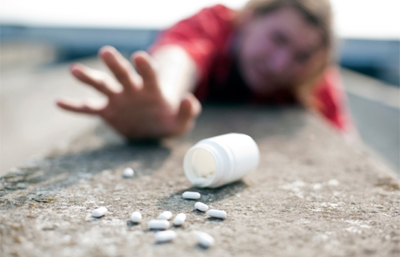
What is Naltrexone used for?
Naltrexone is used to help people get off opiates such as heroin and morphine. It blocks the effects of these drugs. It should be used with social help, medical help and psychological help. Naltrexone is sometimes also used for rapid detox in opioid dependence. It blocks the effects of any opiates the person takes, and can be used for long-term treatment.
Naltrexone can also be used to help people to stay off alcohol i.e. for alcohol dependence. It seems to block the craving for the next drink, and the reward from it, so stops a one off lapse turning in to a full relapse.
How does Naltrexone work?
Naltrexone helps reduce alcohol intake in people with an alcohol problem by blocking the craving and "reward" from a drink, so reducing the desire to drink.
If you have been taking opiates then you will have been stimulating your opiate receptors. This in turn releases dopamine in your reward centers of your brain and gives you the good feeling. Naltrexone blocks these receptors and stops any buzz or effect from taking heroin. This will also help to reduce craving.
STARTING, STOPPING, TAKING?
When should I take Naltrexone ?
For opiate dependence, the usual starting dose is 25mg (half a tablet) for the first day, then going up to 50mg a day. Because each dose lasts for a while, it can sometimes be taken three times a week (e.g. 100mg on Monday, 100mg on Wednesday and 150mg on Friday).
If you are taking naltrexone for opiate dependence it must not be started until all the opiate is out of your body, otherwise it will cause you to get bad withdrawal symptoms. After a detox this usually takes about 7-10 days. To check that you are OK to start naltrexone a urine screen should be taken and should be negative for opiates. To make absolutely sure you may be given a small injection of a short-acting opiate blocker called naloxone (so that if you run into trouble it will be short-lived). This is called a "Naloxone Challenge". If you don't get withdrawal symptoms after this, naltrexone can be started by mouth at 25mg the same day and then 50mg the next day.
It should not be started if you have used opiates in the last 7-10 days. Thus, you may be given a "Naloxone Challenge", with an injection of naloxone to make sure you don't get sudden withdrawal symptoms.
For alcohol dependence the starting dose is usually 50mg a day.
How should I take Naltrexone ?
The tablets should be swallowed with at least half a glass of water whilst sitting or standing. This is to make sure that they reach the stomach and do not stick in your throat.
How long will Naltrexone take to work?
It starts to work in about an hour, the peak is after about an hour and the effect can last for 2-3 days if used for opiate dependence. If you are taking it for alcohol dependence, it may take several weeks or months to have its full effect.
How long will Naltrexone need to be taken for?
Naltrexone is part of the treatment and so there is no set answer to this. You should probably take it for at least 3 months to start with, possibly even longer. Some people take it for over a year for alcohol dependence.
Is Naltrexone addictive?
For a drug to be addictive or produce dependence, then it must have a number of characteristics:
- Should produce craving for the drug when the last dose "wears off"
- There should be a "reward" (e.g. a good feeling) from taking the drug
- Should produce tolerance ie you need more drug to get the same effect
- Should produce withdrawal symptoms specific to that drug.
These characteristics come from the World Health Organisation. Naltrexone does not stimulate opiate receptors and so there is no tolerance, reward, withdrawal or craving, and so is not addictive.
Can I stop taking Naltrexone suddenly?
There is no great problem if you stop Naltrexone suddenly. There are no withdrawal symptoms. BUT, you must be very aware that if you then start to use opiates again, you may be MUCH MORE sensitive than you were before. If you then take a higher dose (which you might have been able to take OK before) it could kill you by stopping you breathing. This doesn't apply to alcohol dependence.
INTERACTIONS, FOOD & DRINK

Are there any foods or drinks that I should avoid whilst I am taking Naltrexone ?
You should have no problems with any food or drinks, other than alcohol.
Can I drink alcohol while I am taking Naltrexone ?
Whether or not it is safe to drink alcohol with any medicine will depend on:
- How much you have to drink e.g. the amount and over how long
- What you then try to do (e.g. sleep or drive)
- If you have any other conditions e.g. epilepsy, asthma or a chest infection (as alcohol can make it harder to breathe)
- If you are taking any other medicines
Alcohol reaches all parts of the brain and can affect may things e.g. thinking, reactions and breathing. Alcohol can also boost the effect of GABA (the brain's main calming chemical messenger).
Naltrexone does not ‘block' alcohol and it will not make you ill if you drink with it.
If you drink alcohol while taking naltrexone you may notice that the pleasurable effects are less. This may help you to decide not to have another drink. Naltrexone does not stop you getting intoxicated (drunk) and you are still not safe to drive if you drink.
If you are taking naltrexone to help stay off alcohol then obviously you must try to avoid drinking.
If you are taking naltrexone to help stay off opiates you should be careful to avoid drinking to replace the opiates.
What about illicit drugs such as cannabis, cocaine, ecstasy and opiates with Naltrexone ?
By including this section, we're not saying it's right to take illicit or illegal drugs, because it isn't. We're just trying to answer the questions as best we can under the circumstances. With illicit drugs, the full answer is usually that we don't really know. So, we can only go on a few studies, a few reports and what we know about the drugs themselves.
Cannabis (illegal in most countries): Smoking cannabis increases the amount of dopamine in the pleasure centers of the brain, which is where the reward or buzz comes from. However, psychosis also comes from having too much dopamine in another area of the brain. You have to remember that cannabis can increase dopamine in all areas of the brain and so can make psychosis worse. Please be careful, everything in moderation and if dope makes you worse, keep off the grass. It really won't help you in the long-term. However, it seems that there are no extra problems if smoking cannabis with naltrexone, although naltrexone might increase the effects of cannabis.
Cocaine (illegal in most countries): Cocaine is of course highly addictive and has many adverse or side effects on the body and brain. It can make most mental health symptoms worse in the long-term. However, there are no reports of extra problems with naltrexone and cocaine, although this doesn't mean it's safe.
Ecstasy (illegal in most countries): Ecstasy has many effects on the brain, the main ones producing the high seem to be by boosting serotonin, noradrenaline and dopamine in the brain. While it can cause a high, the effect wears off fairly quickly. It seems that the toxic effects on the brain are cumulative i.e. the more tablets you have over your lifetime, the more chance you have of having damage to the brain e.g. long-term depression and poor memory. However, there are no reports of extra problems with naltrexone and ecstasy, but this doesn't mean it's safe.
Opiates: The opiates include many chemicals, some of which are used in medical care (e.g. codeine for diarrhoea and stopping coughs, diamorphine and morphine for pain). Naltrexone blocks the opiate receptors in the brain and stops the reward or buzz. Trying to overcome this is dangerous. If you use on top, you can become toxic, and stop breathing, become extra sedated and fall over ("postural hypotension"). So, it's a really bad idea. If this starts to happen to you or someone else you MUST get to a hospital as soon as possible.
WOMEN’S HEALTH
If I am on the contraceptive pill, how will Naltrexone be affected?
You should have no problem with naltrexone and the oral contraceptive ("The Pill").
Will emergency contraception (the "morning-after pill") work if I am taking Naltrexone ?
‘The morning after pill'. It is taken to reduce the chances of becoming pregnant after unprotected sex or failure of a contraceptive method. In fact "Emergency Contraception" is the better term because it can be taken up to 72 hours (3 days) afterwards. It can be bought over-the-counter without a prescription from pharmacies.
If you are taking naltrexone, the usual dose should work if you follow the instructions carefully.
N.B. We accept that for religious, cultural or ethical reasons some people do not approve of, or agree with, the use of the "Morning After" pill. However, we have answered the question as it is a commonly asked.
Will Naltrexone affect my periods (menstrual cycle)?
Several female functions such as menstrual cycle (e.g. your periods) are controlled by a hormone called prolactin. Prolactin in the body rises during and after pregnancy and this triggers the body to make breast milk. The amount of prolactin in the body is kept in control by one part of the brain uses dopamine as its chemical messenger. Some medicines (especially antipsychotics) block the effect of dopamine in the brain.
Luckily naltrexone doesn't seem to have any effect on dopamine in this part of the brain and so should not have any effect on your periods. If your periods are irregular or late, or you start leaking milk, then you should see your doctor about this to find the cause.
Can I breast feed if I am taking Naltrexone ?
There is very little to evidence to say if naltrexone is safe in pregnancy or not so in an ideal world it would be best to stop it. BUT alcohol and heroin are very dangerous for babies. If you feel strongly that taking naltrexone is vital to stop you relapsing it may be better to carry on taking it. Talk to your doctor and weigh up the risks together.
Almost every medicine passes into breast-milk. The main questions are how much and if this is likely to have an effect on your baby. But also remember that being ill (e.g. depressed, manic, psychotic) may have more harmful and lasting effects on you and your child (such as bonding and behavior) than a small amount of an effective medicine. If you have been taking a medicine while you are pregnant, you should usually be able to carry on as the amount in breast-milk is much less than the baby would have got while you were pregnant. It is usually thought to be fairly safe if the baby gets less than 10% of the mum's dose. But there may be times when although a medicine gets into breast milk the benefit may be worth the risk, so you should seek personal advice on this.
If you stop any medicine suddenly, some people can get discontinuation or withdrawal symptoms (see question above). If you have been taking a medicine during pregnancy, the same can sometimes happen to the baby when born. If the drug gets into breast milk, this can reduce the effect of suddenly not having the medicine (as well as coping with being in the big wide world too).
If you want to breast-feed there are some things you can do to reduce any risk:
- Nearly all medicines can be taken once a day. So, taking your daily dose just before the baby's longest sleep (often this will be at night) will reduce the amount the baby gets from the milk.
- Any side effects in the baby will be higher if the mum is taking a higher dose. So, try to take the lowest dose possible to still get an effect.
- Try not to take any medicines you don't really need. This includes any medicines you might buy over-the-counter
- Make sure your nurse or doctor checks your baby for any side effects e.g. being extra sleepy, having colic, feeding problems, being floppy or poor weight gain. If there are any problems you might need to switch medicines or drop your dose a bit
- Hind milk (the second half of the feed) is likely to contain slightly more of any medicine than the first half
- Avoid new medicines if possible as there is less information about them and breast-feeding.
You must be extra careful of any medicines if your baby was pre-mature, or has kidney, liver, heart or brain problems.
OTHER FAQs
Can I drive while I am taking Naltrexone ?
Naltrexone has some effect on driving skills so you will need to be careful if driving or operating machinery
Naltrexone Implant
About the Naltrexone Implant
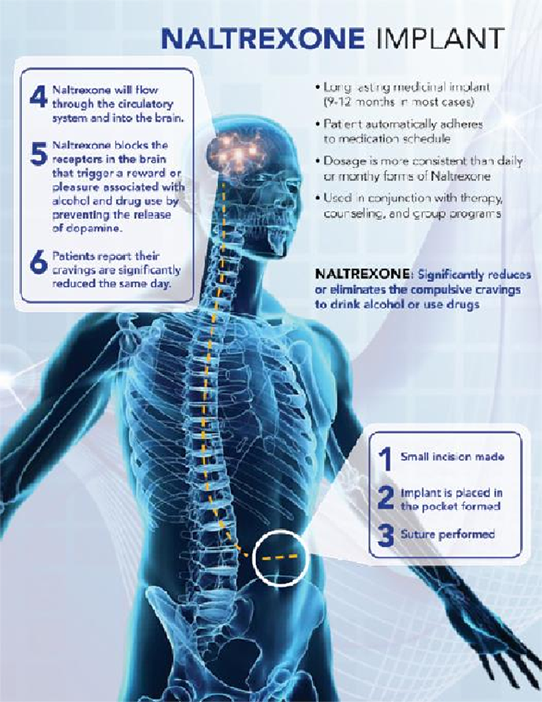
The Naltrexone Implants comprises of the Indian FDA-approved Naltrexone active ingredient, which blocks the receptors and removes the euphoria, reinforcing effects, and physical cravings associated with alcohol consumption and drug abuse. More importantly, within hours of receiving the Naltrexone implant, many patients report feeling complete freedom from cravings. Most individuals are able to return to work the following day. Only the people with whom you wish to share know that you are enrolled in a rehab program.
Mechanism of Action
Naltrexone reverses the effects of opioids and is used primarily in the management of alcohol and drug addiction. Naltrexone and its active metabolite 6β-naltrexol block the opioid receptors so that other drugs cannot bind to these receptors and modulate their function in the body. Naltrexone is also hypothesized to affect the dopaminergic pathway, (one of the primary centers for risk-reward analysis in the brain, and a tertiary "pleasure center") which is hypothesized to be a major center of the reward associated with addiction that all major drugs of abuse are believed to activate.
Advantages of the Implant
The advantages of Naltrexone Implant are:
- Higher efficacy: Clinical studies have shown that the Naltrexone implant was better associated with reducing drug and alcohol craving and relapse than naltrexone oral tablets.
- Long duration of action: The controlled release technology maintains a steady therapeutic level of Naltrexone in the body for a period of three months.
- Higher Patient Compliance: Unlike the daily administration of oral Naltrexone tablets, the implants continuously block the craving to drugs and alcohol for a long duration.
The Implant Procedure
This quick outpatient procedure immediately begins to reduce the cravings for alcohol and drugs. The Naltrexone implant slowly releases the medicine into the body for up to 3 months or longer, in most patients, depending on individual characteristics and metabolism. Once the physical cravings for the abused substance is suppressed, patients are able to focus on their mental, emotional, and spiritual healing in order to successfully achieve a safe and sober lifestyle. This minimally-invasive outpatient procedure is performed by a trained surgeon in his surgical suite, requiring only local anesthetic, and takes 15 to 20 minutes. Specifically formulated and biodegradable, the implant is inserted just beneath the skin in the lower abdominal area.
How it Works?
Step 1: Call our helpline & book a session.
Step 2: First Assessment with doctor.
Step 3: Implant insertion (15 min procedure).
Step 4: Follow ups & patient monitoring.
Treatment Procedure & Cost
After the first (In-Clinic or home-based) assessment by the Navicare doctor, the implant date is decided with the patient. The Naltrexone Implants are imported from Europe and usually take 30-45 days to get the necessary permissions to import. The cost of the treatment with Naltrexone implant is Rs. 85,000 per implant. To know more details contact our help line 1800-419-0702.
Acamprosate
WHAT IT IS?
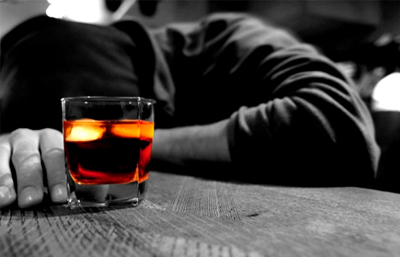
What is Acamprosate used for?
Acamprosate is used to help reduce relapse in people with a drinking problem who want to stop i.e. alcohol dependence. It doesn't help withdrawal symptoms. It must be used in combination with counseling and support.
How does Acamprosate work?
Glutamate is a chemical messenger in the brain. It is activating and stimulates receptors called NMDA receptors. When someone drinks a lot over a long time, the brain makes more of these receptors and they become oversensitive. When that person stops drinking, the brain produces more glutamate because it is trying to stimulate the brain to get more alcohol. This extra glutamate activity causes the symptoms of delirium tremens, can cause seizures or fits and causes cell death. Acamprosate helps reduce this surge of glutamate.
Acamprosate also boosts GABA, which is the brain's main calming chemical messenger. This helps balance the excess glutamate and so help minimize the problems. This also reduces the reward from alcohol drinking and the craving for alcohol.
Acamprosate may also help protect brain cells from damage caused by having too much glutamate.
If the person does relapse and start drinking again, acamprosate may help reduce the severity of the relapse.
Sometimes it is used with disulfiram, and acamprosate may work better with disulfiram.
STARTING, STOPPING, TAKING?
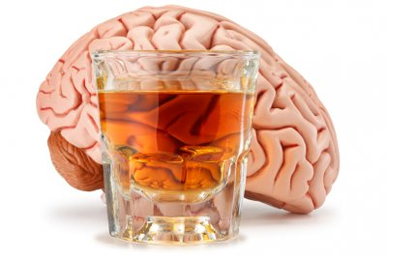
When should I take Acamprosate?
The usual dose if two tablets taken three times a day e.g. at breakfast, in the afternoon (lunch or tea) and at night.
How should I take Acamprosate?
The tablets should be swallowed whole with at least half a glass of water whilst sitting or standing. This is to make sure that they reach the stomach and do not stick in your throat. They are enteric-coated and so should not be chewed.
How long will Acamprosate take to work?
Acamprosate should be started as soon as possible after you have stopped drinking alcohol. It will start to have an effect after about a week or so. The effect should build steadily over the next few months.
How long will Acamprosate need to be taken for?
It is recommended to take acamprosate for at least six months and possibly up to about a year. It may help to take it longer than that. Stopping after a couple of months won't help as the effect is much better if you take it for much longer.
Is Acamprosate addictive?
For a drug to be addictive or produce dependence, then it must have a number of characteristics:
- Should produce craving for the drug when the last dose "wears off"
- There should be a "reward" (e.g. a good feeling) from taking the drug
- Should produce tolerance ie you need more drug to get the same effect
- Should produce withdrawal symptoms specific to that drug.
These come from the World Health Organisation. Acamprosate has none of these and so is not addictive.
Can I stop taking Acamprosate suddenly?
Yes you can, but obviously it will stop working. There are no "withdrawal" symptoms as such, even after a year.
INTERACTIONS, FOOD & DRINK
Are there any foods or drinks that I should avoid whilst I am taking Acamprosate?
Acamprosate is best taken on an empty stomach because food reduces the amount you absorb. However, you should have no problems with any foods or drinks.
Can I drink alcohol while I am taking Acamprosate?
The point of taking acamprosate is to avoid drinking alcohol. However, it is not dangerous if mixed with alcohol. If you do have a drink, carry on taking acamprosate as it may help you not to continue drinking. However, if you are still drinking after two weeks you should stop it as it is clearly not working for you.
What about illicit drugs such as cannabis, cocaine, ecstasy and opiates with Acamprosate?
By including this section, we're not saying it's right to take illicit or illegal drugs, because it isn't. We're just trying to answer the questions as best we can under the circumstances. With illicit drugs, the full answer is usually that we don't really know. So, we can only go on a few studies, a few reports and what we know about the drugs themselves.
Cannabis (illegal in most countries): Smoking cannabis increases the amount of dopamine in the pleasure centers of the brain, which is where the reward or buzz comes from. However, psychosis also comes from having too much dopamine in another area of the brain. You have to remember that cannabis can increase dopamine in all areas of the brain and so can make psychosis worse. Please be careful, everything in moderation and if dope makes you worse, keep off the grass. It really won't help you in the long-term. However, it seems that there are no extra problems if smoking cannabis with acamprosate.
Cocaine (illegal in most countries): Cocaine is of course highly addictive and has many adverse or side effects on the body and brain. It can make most mental health symptoms worse in the long-term. However, there are no reports of extra problems with acamprosate and cocaine, although this doesn't mean it's safe.
Ecstasy (illegal in most countries): Ecstasy has many effects on the brain, the main ones producing the high seem to be by boosting serotonin, noradrenaline and dopamine in the brain. While it can cause a high, the effect wears off fairly quickly. It seems that the toxic effects on the brain are cumulative i.e. the more tablets you have over your lifetime, the more chance you have of having damage to the brain e.g. long-term depression and poor memory. However, there are no reports of extra problems with acamprosate, but again this doesn't mean it's safe.
Opiates: The opiates include many chemicals, some of which are used in medical care (e.g. codeine for diarrhoea and stopping coughs, diamorphine and morphine for pain). However, there are no extra problems reported from taking opiates (e.g. heroin, methadone, codeine) with acamprosate, although you might feel more drowsy.
WOMEN’S HEALTH
If I am on the contraceptive pill, how will Acamprosate be affected?
You should not have any problems with acamprosate and the oral contraceptive ("The Pill").
Will emergency contraception (the "morning-after pill") work if I am taking Acamprosate?
'The morning after pill', is taken to reduce the chances of becoming pregnant after unprotected sex or failure of a contraceptive method. In fact "Emergency Contraception" is the better term because it can be taken up to 72 hours (3 days) afterwards. If you are taking acamprosate, the usual dose should work if you follow the instructions carefully.
N.B. We accept that for religious, cultural or ethical reasons some people do not approve of, or agree with, the use of the "Morning After" pill. However, we have answered the question as it is a commonly asked.
Will Acamprosate affect my periods (menstrual cycle)?
Several female functions such as menstrual cycle (e.g. your periods) are controlled by a hormone called prolactin. Prolactin in the body rises during and after pregnancy and this triggers the body to make breast milk. The amount of prolactin in the body is kept in control by one part of the brain uses dopamine as its chemical messenger. Some medicines (especially antipsychotics) block the effect of dopamine in the brain.
Luckily acamprosate doesn't seem to have any effect on dopamine in this part of the brain and so should not have any effect on your periods. If your periods are irregular or late, or you start leaking milk, then you should see your doctor about this to find the cause.
Can I breast feed if I am taking Acamprosate?
Almost every medicine passes into breast-milk. The main questions are how much and if this is likely to have an effect on your baby. But also remember that being ill (e.g. depressed, manic, psychotic) may have more harmful and lasting effects on you and your child (such as bonding and behavior) than a small amount of an effective medicine. If you have been taking a medicine while you are pregnant, you should usually be able to carry on as the amount in breast-milk is much less than the baby would have got while you were pregnant. It is usually thought to be fairly safe if the baby gets less than 10% of the mum's dose. But there may be times when although a medicine gets into breast milk the benefit may be worth the risk, so you should seek professional advice on this.
If you stop any medicine suddenly, some people can get discontinuation or withdrawal symptoms. If you have been taking a medicine during pregnancy, the same can sometimes happen to the baby when born. If the drug gets into breast milk, this can reduce the effect of suddenly not having the medicine (as well as coping with being in the big wide world too).
If you want to breast-feed there are some things you can do to reduce any risk:
- Nearly all medicines can be taken once a day. So, taking your daily dose just before the baby's longest sleep (often this will be at night) will reduce the amount the baby gets from the milk.
- Any side effects in the baby will be higher if the mum is taking a higher dose. So, try to take the lowest dose possible to still get an effect.
- Try not to take any medicines you don't really need. This includes any medicines you might buy over-the-counter
- Make sure your nurse, health visitor or doctor checks your baby for any side effects e.g. being extra sleepy, having colic, feeding problems, being floppy or poor weight gain. If there are any problems you might need to switch medicines or drop your dose a bit
- Hind milk (the second half of the feed) is likely to contain slightly more of any medicine than the first half
- Avoid new medicines if possible as there is less information about them and breast-feeding.
You must be extra careful of any medicines if your baby was pre-mature, or has kidney, liver, heart or brain problems.
We don't really know about acamprosate, although animal studies show some might get into the milk. It is officially not recommended although the risk of you drinking alcohol again might be worse than any acamprosate in the milk. You should discuss this with your doctor..
OTHER FAQs
Can I drive while I am taking Acamprosate?
Acamprosate should have no effect on your ability to drive, provided you have not been drinking of course.
Disulfiram
WHAT IT IS?
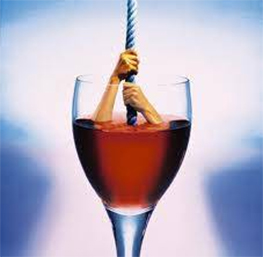
What is Disulfiram used for?
Disulfiram is used to help people with an alcohol problem to stop drinking i.e. alcohol dependence.
How does Disulfiram work?
Disulfiram changes the way the body handles alcohol, causing an unpleasant reaction. Within 5-10 minutes of drinking alcohol (and lasting up to several hours) you may get feelings of sickness, skin flushing, racing heart, shortness of breath, headache and nausea. Expecting a ‘negative' rather than a ‘positive' experience from alcohol starts to teach your brain not to crave it.
In some people a severe reaction to alcohol can cause collapse and even death. This is rare and usually only occurs with high levels of alcohol intake and/or higher doses of disulfiram.
The effect of taking disulfiram lasts for up to 7 days because you have to wait for the body to make more of the enzyme that breaks down alcohol. This can take a couple of weeks so avoid alcohol for at least a week after stopping disulfiram.
Below is the process in which Disulfiram works:-
- When you drink alcohol, the liver breaks this alcohol down.
- The liver first uses an enzyme called alcohol dehydrogenase to break alcohol down into acetaldehyde.
- Another enzyme called acetaldehyde dehydrogenase then breaks down this acetaldehyde into harmless acetic acid. The body then gets rid of this as part of the usual routine.
- A build up of acetaldehyde in the blood is one of the main causes of the symptoms of a hangover, such as sickness.
- Disulfiram stops the acetaldehyde dehydrogenase enzyme working to break down acetaldehyde.
- This means that acetaldehyde builds up in the body, and this causes feelings of sickness, skin flushing, racing heart, shortness of breath, headache, nausea, and it can cause the blood circulation to collapse.
- This happens within 5-10 minutes of drinking alcohol and can last for half an hour or more.
STARTING, STOPPING, TAKING?
When should I take Disulfiram?
Disulfiram should be taken each day. Because each dose lasts for a while, it can sometimes be taken three times a week on Monday, on Wednesday and Friday. The total dose taken each week must stay the same, so if you are taking one tablet a day, you should take two on Monday, two on Wednesday and three on Friday.
How should I take Disulfiram?
The tablets should be swallowed with at least half a glass of water whilst sitting or standing. This is to make sure that they reach the stomach and do not stick in your throat. As an alternative, the tablets can be dropped into a glass of water and dispersed, and can be swallowed. This can help to make sure someone has swallowed them properly or who has difficulty swallowing tablets.
Evidence suggests that disulfiram works best if someone helps you to remember to take it. It is important that the responsibility for taking it stays with you, but taking it in front of, or with, someone else (like your partner) can be helpful.
How long will Disulfiram take to work?
The effect starts very quickly e.g. within a few hours. Because of this, you should not take disulfiram if you have had alcohol within the last 24 hours, or you may get an unpleasant reaction. The effect can last for up to two weeks after the last dose.
How long will Disulfiram need to be taken for?
That is up to you and your doctor to decide. Many people take it for many years. Probably about 6 months is the minimum.
Is Disulfiram addictive?
For a drug to be addictive or produce dependence, then it must have a number of characteristics:
- Should produce craving for the drug when the last dose "wears off"
- There should be a "reward" (e.g. a good feeling) from taking the drug
- Should produce tolerance ie you need more drug to get the same effect
- Should produce withdrawal symptoms specific to that drug.
These characteristics come from the World Health Organisation. Disulfiram has none of these features and so is not addictive.
Can I stop taking Disulfiram suddenly?
There are no withdrawal symptoms so there is no problem stopping disulfiram suddenly. It will of course stop working.
INTERACTIONS, FOOD & DRINK
Are there any foods or drinks that I should avoid whilst I am taking Disulfiram?
Some foods and drinks have some alcohol in them.
You also need to be careful with caffeine. The liver has many enzymes that break down chemicals from foods, drinks and medicines. One of these enzymes is called CYP1A2 (sometimes P450-1A2). Caffeine is broken down by CYP1A2. Caffeine (e.g. in tea, coffee, colas, energy drinks etc) can also increase the speed at which CYP1A2 works. Disulfiram slows down the speed at which 1A2 works. This can mean you would get more of an effect from the same amount of caffeine.
Can I drink alcohol while I am taking Disulfiram?
Definitely NO !
You should not have had any alcohol for 24 hours before starting disulfiram, and for fourteen days after stopping it. If you do, you will get what is called the "Disulfiram-alcohol reaction" or "Antabuse-alcohol Reaction". This can happen within 10-15 minutes of taking any alcohol, and can last up to several hours. It includes:
- Severe flushing, red face
- Headache
- Hypotension (low blood pressure, so you might feel dizzy when you stand up)
- Feeling sick or being sick
This can be fatal.
Be aware that there can be enough alcohol in some other products to give you this reaction e.g. some foods, liquid medicines, tonics, toiletries, perfumes and sprays. Even some "non-alcoholic" drinks have some alcohol.
The same thing happens with the antibiotic metronidazole (used to treat some infections e.g. teeth abscesses). So if you don't want to say to someone that you're taking disulfiram, just say you're taking an antibiotic called metronidazole (metro-nid-a-zole) for an infection so you can't drink.
What about illicit drugs such as cannabis, cocaine, ecstasy and opiates with Disulfiram?
By including this section, we're not saying it's right to take illicit or illegal drugs, because it isn't. We're just trying to answer the questions as best we can under the circumstances. With illicit drugs, the full answer is usually that we don't really know. So, we can only go on a few studies, a few reports and what we know about the drugs themselves.
Cannabis (illegal in most countries): Smoking cannabis increases the amount of dopamine in the pleasure centers of the brain, which is where the reward or buzz comes from. However, psychosis also comes from having too much dopamine in another area of the brain. You have to remember that cannabis can increase dopamine in all areas of the brain and so can make psychosis worse. Please be careful, everything in moderation and if dope makes you worse, keep off the grass. It really won't help you in the long-term. However, disulfiram does not seem to be affected so there seem to be no extra problems if smoking cannabis with disulfiram, although you might feel a little more drowsy and there have been a couple of reports of confusion and mania.
Cocaine (illegal in most countries): Cocaine is of course highly addictive and has many adverse or side effects on the body and brain. It can make most mental health symptoms worse in the long-term. However, there are no reports of extra problems with disulfiram and cocaine, although this doesn't mean it's safe. If you take cocaine while you are also taking disulfiram at up to 250mg a day you may notice a slightly lower effect from the cocaine, although the effect at higher doses of disulfiram hasn’t been tested.
Ecstasy (illegal in most countries): Ecstasy has many effects on the brain, the main ones producing the high seem to be by boosting serotonin, noradrenaline and dopamine in the brain. While it can cause a high, the effect wears off fairly quickly. It seems that the toxic effects on the brain are cumulative i.e. the more tablets you have over your lifetime, the more chance you have of having damage to the brain e.g. long-term depression and poor memory. However, there are no reports of extra problems with ecstasy and disulfiram, but again this doesn't mean it's safe.
Opiates: The opiates include many chemicals, some of which are used in medical care (e.g. codeine for diarrhoea and stopping coughs, diamorphine and morphine for pain). However, there are no extra problems reported from taking opiates (e.g. heroin, methadone, codeine) with disulfiram, although you might feel more drowsy.
WOMEN’S HEALTH
If I am on the contraceptive pill, how will Disulfiram be affected?
You should have no problem with Disulfiram and the oral contraceptive.
Will emergency contraception (the "morning-after pill") work if I am taking Disulfiram?
The morning after pill', is taken to reduce the chances of becoming pregnant after unprotected sex or failure of a contraceptive method. In fact "Emergency Contraception" is the better term because it can be taken up to 72 hours (3 days) afterwards. If you are taking disulfiram, the usual dose should work if you follow the instructions carefully.
N.B. We accept that for religious, cultural or ethical reasons some people do not approve of, or agree with, the use of the "Morning After" pill. However, we have answered the question as it is a commonly asked.
Will Disulfiram affect my periods (menstrual cycle)?
Several female functions such as menstrual cycle (e.g. your periods) are controlled by a hormone called prolactin. Prolactin in the body rises during and after pregnancy and this triggers the body to make breast milk. The amount of prolactin in the body is kept in control by one part of the brain uses dopamine as its chemical messenger. Some medicines (especially antipsychotics) block the effect of dopamine in the brain.
Luckily disulfiram doesn't seem to have any effect on dopamine in this part of the brain and so should not have any effect on your periods. If your periods are irregular or late, or you start leaking milk, then you should see your doctor about this to find the cause.
Can I breast feed if I am taking Disulfiram?
Almost every medicine passes into breast-milk. The main questions are how much and if this is likely to have an effect on your baby. But also remember that being ill (e.g. depressed, manic, psychotic) may have more harmful and lasting effects on you and your child (such as bonding and behavior) than a small amount of an effective medicine. If you have been taking a medicine while you are pregnant, you should usually be able to carry on as the amount in breast-milk is much less than the baby would have got while you were pregnant. It is usually thought to be fairly safe if the baby gets less than 10% of the mum's dose. But there may be times when although a medicine gets into breast milk the benefit may be worth the risk, so you should seek personal advice on this.
If you stop any medicine suddenly, some people can get discontinuation or withdrawal symptoms. If you have been taking a medicine during pregnancy, the same can sometimes happen to the baby when born. If the drug gets into breast milk, this can reduce the effect of suddenly not having the medicine (as well as coping with being in the big wide world too).
If you want to breast-feed there are some things you can do to reduce any risk:
- Nearly all medicines can be taken once a day. So, taking your daily dose just before the baby's longest sleep (often this will be at night) will reduce the amount the baby gets from the milk.
- Any side effects in the baby will be higher if the mum is taking a higher dose. So, try to take the lowest dose possible to still get an effect.
- Try not to take any medicines you don't really need. This includes any medicines you might buy over-the-counter
- Make sure your nurse, health visitor or doctor checks your baby for any side effects e.g. being extra sleepy, having colic, feeding problems,being floppy or poor weight gain. If there are any problems you might need to switch medicines or drop your dose a bit
- Hind milk (the second half of the feed) is likely to contain slightly more of any medicine than the first half
- Avoid new medicines if possible as there is less information about them and breast-feeding.
You must be extra careful of any medicines if your baby was pre-mature, or has kidney, liver, heart or brain problems.
We don't really know about disulfiram, although animal studies show some might get into the milk. It is officially not recommended. The other problem might be that there can be small amounts of alcohol in some children's medicines, which wouldn't be a good idea if your baby had some disulfiram from the breast milk. But you should discuss this with your doctor because being back on alcohol might be more harmful to your baby than a small amount of disulfiram. They will be able to make regular checks on your baby to make sure there are no problems e.g. poor feeding or colic.
OTHER FAQs
Can I drive while I am taking Disulfiram?
Disulfiram is unlikely to have an effect on your driving.
Nicotine Transdermal Patches
WHAT IT IS?

How does Transdermal Nicotine Patch work? What will it do for me?
This medication belongs to a family of medications known as nicotine replacement therapies. It is used to help people quit smoking. When a person stops smoking, they go through withdrawal from nicotine that causes symptoms such as irritability, mood swings, restlessness, trouble concentrating, and increased appetite. This medication helps reduce the symptoms of nicotine withdrawal by replacing some of the nicotine that the person no longer receives through cigarettes.
The nicotine patch when applied to the skin delivers a steady dose of nicotine over a 24-hour period. Gradually, the dose is reduced until the person no longer craves nicotine, and they can stop using the medication. This medication works best when used with a comprehensive program to quit smoking.
Starting, Taking, Stopping
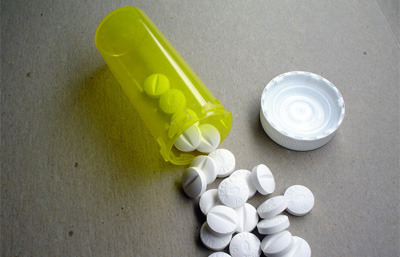
How should I take Nicotine Transdermal Patch ?
Ask your doctor or pharmacist to teach you how to use the nicotine patch effectively and to give you tips on quitting smoking. Only one nicotine patch should be applied once a day to an area on the upper body or upper outer arm that is non-hairy, intact, non-irritated, clean, and dry.
After 24 hours, the old patch should be removed and discarded and a new patch applied. Be sure that new and discarded patches are kept out of the reach of children. It is very important to apply the patch to a new site on the body and avoid any unnecessary contact with the medicated part of the patch. If during handling you do come into contact with the medicated portion of the patch, quickly wash the affected area with water only. Do not use soap as it can increase the amount of nicotine absorbed into the body. Avoid contact with your eyes.
What if my skin is very hairy?
If you need to, you can shave a small area of skin and apply the Nicotine Transdermal Patch to it.
Can Nicotine Transdermal Patch be placed over a tattoo?
We suggest wearing the patch on a part of your body that is not tattooed. It is unknown whether the tattoo would affect how the patch would work, or if the tattoo coloring would change.
What form(s) does Nicotine Transdermal Patch come in?
This medication is available as 7mg/day, 14 mg/day, and 21 mg/day patches.
How long will Nicotine Transdermal Patch need to be taken for and at what dose?
Your initial dose and duration of therapy can depend on a number of factors such as weight, number of cigarettes you smoke, and various medical conditions. Speak with your doctor or pharmacist before beginning a nicotine patch therapy.
Therapy for most people begins with the 21 mg/day patch and continues for 6 weeks. It is important to reassess your initial dose of nicotine after the first 2 weeks of therapy. The next stage of therapy will gradually reduce the dose of nicotine. After successful completion of the first 6-week stage, the 14 mg/day patch should be started for 2 weeks, immediately followed by the 7 mg/day patch for another 2 weeks. Treatment will generally take 8 to 12 weeks. You should not use this medication for more than 3 months. You must stop smoking completely when taking this medication.
It is important to use this medication on a regular schedule as prescribed by the doctor. If you miss a dose of this medication, take your next scheduled dose. Do not take a double dose to MAKE UP for a missed one.
Who should NOT take Transdermal Nicotine Patch ?
Do not use nicotine patches if you:
- are allergic to nicotine or any ingredients of the patch
- are a non-smoker or an occasional smoker
- are pregnant or breast-feeding
- have just had a heart attack
- have life-threatening arrhythmias (abnormal heart rhythm)
- have severe or worsening angina (chest pain)
- have recently had a stroke
- have a generalized skin disorder
How to store the Nicotine Transdermal Patch ?
Store this medication at room temperature, protect it from light and moisture, and keep it out of the reach of children.
Can I stop taking Nicotine Transdermal Patch suddenly?
Do not suddenly stop taking nicotine patch without your doctor's approval. If you do, you may have WITHDRAWAL symptoms. These may include anxiety, craving, impaired concentration, increased appetite, irritability, nervousness, sleep disturbances, and weight gain.
INTERACTIONS, FOOD & DRINK
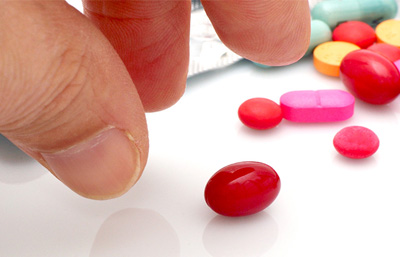
What other drugs could interact with Nicotine Transdermal Patch ?
There may be an interaction between nicotine patches and any of the following:
- acetaminophen
- adenosine
- benzodiazepines
- caffeine
- furosemide
- imipramine
- insulin
- labetalol
- peginterferon alfa-2b
- phenylephrine
- prazosin
- propranolol
- theophylline
An interaction between two medications does not always mean that you must stop taking one of them. Speak to your doctor about how any drug interactions are being managed or should be managed.
WOMEN’S HEALTH

Can I use Nicotine Transdermal Patch if I'm pregnant or nursing?
If you are pregnant or breast-feeding, only use this medicine on the advice of your doctor. Smoking can seriously harm your child. Try to stop smoking without using any nicotine replacement medicine. This medicine is believed to be safer than smoking. However, the risks to your child from this medicine are not fully known.
OTHER FAQs

Can I smoke while wearing the Nicotine Transdermal Patch ?
No. The whole reason is to quit smoking. If you slip and start smoking again, a lapse of one or two or even a few cigarettes need not spoil your efforts. Throw away your cigarettes, forgive yourself and continue with the program. Don't consider yourself a failure or punish yourself. In fact, people who have already tried to quit are more likely to be successful the next time.
Can I use Nicotine Transdermal Patch to help quit chewing tobacco, smoking cigars or using a pipe?
No. Nicotine Transdermal Patch has not been evaluated for treating chewing tobacco, cigar or pipe smoking dependence. Talk with your doctor to find a medicine that is right for your circumstance.
Can I drink alcohol if I am wearing Nicotine Transdermal Patch ?
You can safely drink in moderation. But to reduce the risk of a smoking relapse, you may want to avoid drinking alcohol if you associate it with smoking.
How long will the nicotine stay in my blood or urine?
Trace amounts of nicotine can be detected in blood and urine for several hours, but they should be gone by 48 hours. However, if you are being tested for nicotine, there is a metabolite of nicotine, called cotinine, which can be detected in blood or urine for as long as 7 to 10 days after your last exposure to nicotine.
Bupropion
WHAT IS IT?

WHAT IS IT?
Bupropion is a prescription medicine one takes to reduce your craving for tobacco. Bupropion does not contain nicotine and does not help you quit smoking in the same way that nicotine replacement therapy does. But like other medicines, it decreases cravings and withdrawal symptoms. Using Bupropion along with nicotine replacement therapy (such as nicotine patches, gum, or inhaler) may increase your chances of success.
Starting, Taking, Stopping
- You begin taking Bupropion daily, 1 to 2 weeks before you quit smoking. This builds up the level of medicine in your body.
- You take Bupropion for 7 to 12 weeks after you stop using tobacco.
- You can take it for as long as 6 months to a year.
- Swallow ZYBAN Tablets whole. Do not chew, cut, or crush ZYBAN Tablets. If you do, the medicine will be released into your body too quickly. If this happens you may be more likely to get side effects including seizures.
INTERACTIONS, FOOD & DRINK
- You should not take Bupropion if you:
- Are already taking other medicines that contain Bupropion (such as Wellbutrin for the indication of depression).
- Have seizures or a medical condition that makes you prone to seizures.
- Are taking a monoamine oxidase inhibitor (MAOI).
- Have an eating disorder.
- Have an alcohol use problem.
WOMEN’S HEALTH
If you are pregnant, breast-feeding, or planning to get pregnant, do not use any medicines unless your doctor tells you to. Some medicines can harm your baby. This includes prescription and over-the-counter medicines, vitamins, herbs, and supplements. And make sure that all your doctors know that you are pregnant, breast-feeding, or planning to get pregnant.
OTHER FAQs
Common side effects include:
Dry mouth, affecting 1 out of 10 people who use Bupropion.
Difficulty sleeping (insomnia). If you take a morning and evening dose, taking the evening dose in the afternoon may help with sleep problems. Take the evening dose at least 8 hours after the morning dose.
In over 70 out of 100 people who use Bupropion, the above side effects go away within about a week after they stop taking the medicine. Only about 10 out of 100 people have to stop taking Bupropion because of side effects.
Less common side effects (occurring in less than 10 out of 100 people) include:
- Dizziness.
- Difficulty concentrating.
- Upset stomach (nausea).
- Anxiety.
- Constipation.
- Tremors.
- Skin problems or rashes.
- There is a small risk of having seizures when using Bupropion. The risk increases if you have had seizures in the past.
Varenecline
WHAT IS IT?

WHAT IS IT?
Varenicline is a medicine that was first licensed in the UK in December 2006. It was developed to help smokers to stop smoking. Varenicline mimics the effect of nicotine on the body. Therefore, it both reduces the urge to smoke and relieves withdrawal symptoms.
The precise action of Varenicline is that it interferes with the receptors in the brain that nicotine stimulates. (The nicotine in cigarettes attaches to receptors in brain cells to stimulate part of the brain - this is how nicotine has its effect.) What varenicline does is to partly stimulate the nicotine receptors. This mimics the effects of nicotine, to reduce cravings and withdrawal effects when you stop smoking. However, at the same time, it partially blocks the receptors and prevents nicotine from attaching to the receptors. This blocks or blunts the effect of nicotine in people who give in to temptation and have a cigarette
Starting, Taking, Stopping
A combination of varenicline with counseling from a nurse, doctor, pharmacist, or other health professional is likely to increase your chance of successfully stopping smoking. Therefore, most doctors will only prescribe varenicline to people who really want to stop smoking as part of a stopping smoking program.
- You need a prescription to obtain varenicline - you cannot buy it at pharmacies.
- Decide on a quit date - the date you intend to stop smoking.
- Start taking the tablets one week before the quit date. The aim is to build up the dose so your body gets used to the medicine before the quit date. The usual advice is to start with 0.5 mg daily for the first three days. Then 0.5 mg twice daily on day’s four to seven. Then, 1 mg twice daily for 11 weeks.
- Take each dose with a full glass of water, preferably after eating. So, ideally, after breakfast and after your evening meal.
- Tell your doctor if you develop any side-effects. A reduction in dose may be an option if the side-effect is not serious.
The usual course of treatment is for 12 weeks. If you have successfully stopped smoking by this time
- In some cases, an additional 12 weeks of treatment may be advised. You can discuss this with your doctor. It may be useful for people who are not confident off the cigarettes.
- In some cases, a short tapering off of the dose over a week or so may be helpful. This is because at the end of treatment, if the medicine is stopped abruptly, in about 3 in 100 people there is an increase in irritability, an urge to smoke, depression, and/or sleeping difficulty for a short time. These problems can be eased by a gradual reduction of dose.
- If you have not succeeded in quitting after 12 weeks there is no point in continuing with treatment at this time. Perhaps it is best to discuss things with your doctor or practice nurse as to your future options.
INTERACTIONS, FOOD & DRINK
Are there any possible side-effects?
Most people who take varenicline do not develop any side-effects, or they are only minor. However, it is strongly advised that you read the information that comes with the medicine for a full list of possible side-effects and cautions. The following highlights the most common and the most potentially serious side-effects.
Common but not usually serious side-effects
- The most commonly reported side-effect is feeling sick (nausea). This is often mild and tolerable. Nausea is thought to be less of a problem if you take the tablets just after a meal with a full glass of water.
- Some other reported side-effects that occur in some people include difficulty sleeping (insomnia), abnormal dreams, headaches and wind (flatulence). Taking the evening dose after your evening meal, and not just before bedtime, is thought to reduce any sleep-related side-effects.
- Varenicline may also affect your ability to drive or use machines. You should not drive or operate complex machinery, or take part in potentially hazardous activities, until you know how varenicline affects you.
WOMEN’S HEALTH
Varenicline is generally thought to be a safe medicine for most people. However, it is a relatively new medicine and so caution is used in certain people. For example, it is not licensed to be used in people who are pregnant or breast-feeding, those under the age of 18, and those with severe kidney failure. It may also be used with more caution in people who have certain conditions, such as certain mental health disorders. Also, the possible concerns about heart problems and mood and behaviour are discussed above. Your doctor or practice nurse will advise if you are suitable for this medicine
OTHER FAQs
A possible increase in mood and behavioral changes
Since it has been introduced, there have been various reports of a possible link between varenicline and behaviourial or mood changes. The suspected symptoms include hostility, agitation, depressed mood, suicidal thoughts and attempted suicide. There is no proof that these symptoms are any more common in people taking varenicline compared with the general population.
Also, a study published in 2009 was reassuring in that it didn't find any link between varenicline and depression or suicidal thoughts. However, it concluded that a small increased risk of self-harm with varenicline could not be definitely ruled out. So, to play safe, if you take varenicline, you should get in touch with your doctor if you experience any behaviourial or mood changes.
Regarding this point, the Medicines and Healthcare products Regulatory Agency (MHRA) states: "People who are taking varenicline who develop suicidal thoughts, agitation, depressed mood, or display any changes in behaviour or thinking that are of concern for the doctor, patient, family, or caregiver should stop varenicline and contact their doctor immediately."
